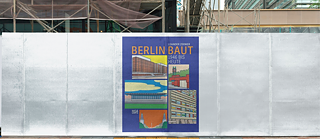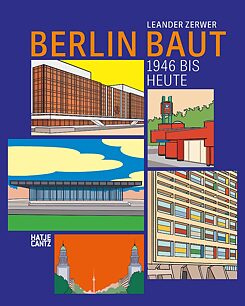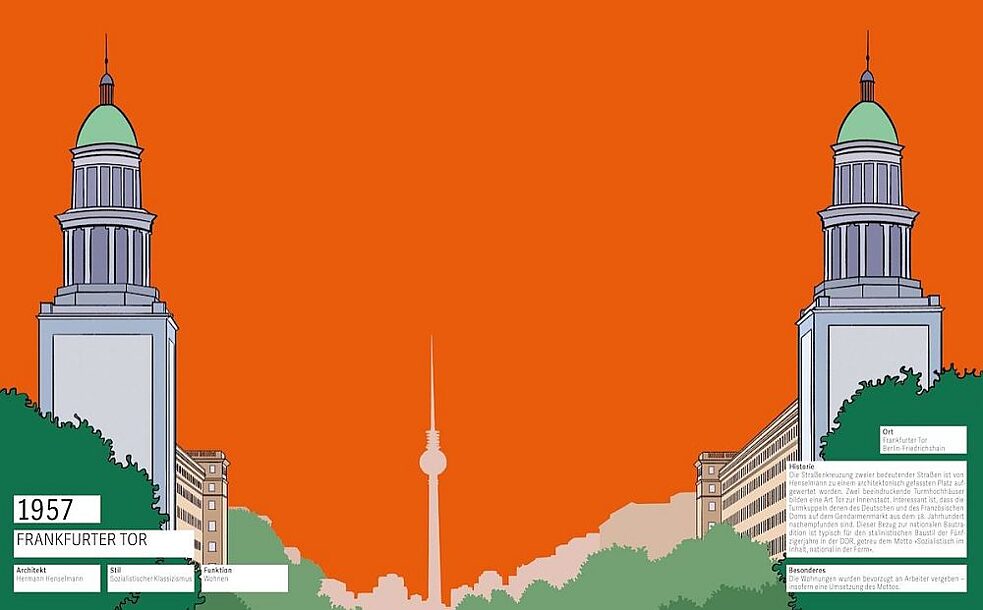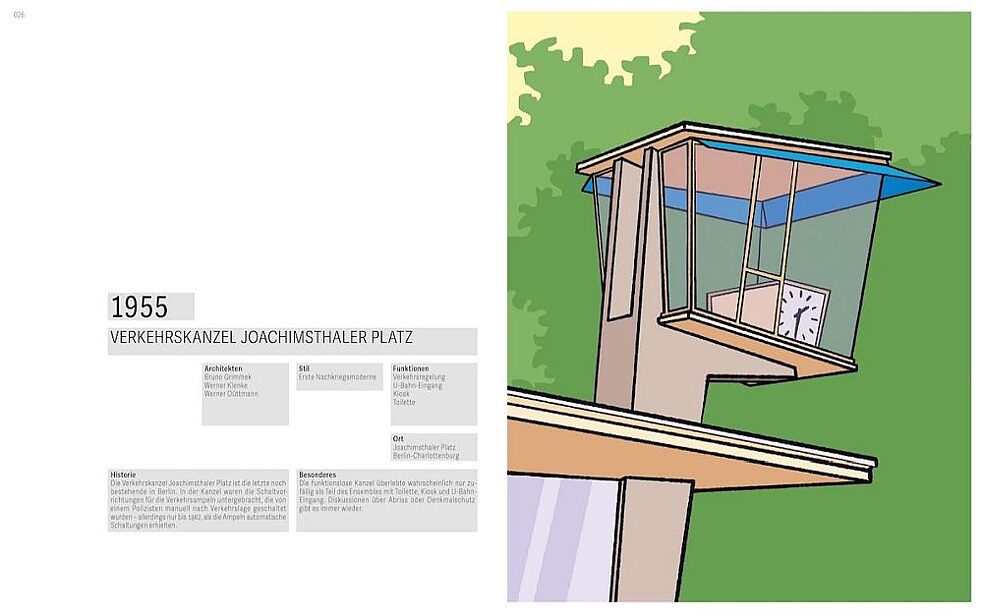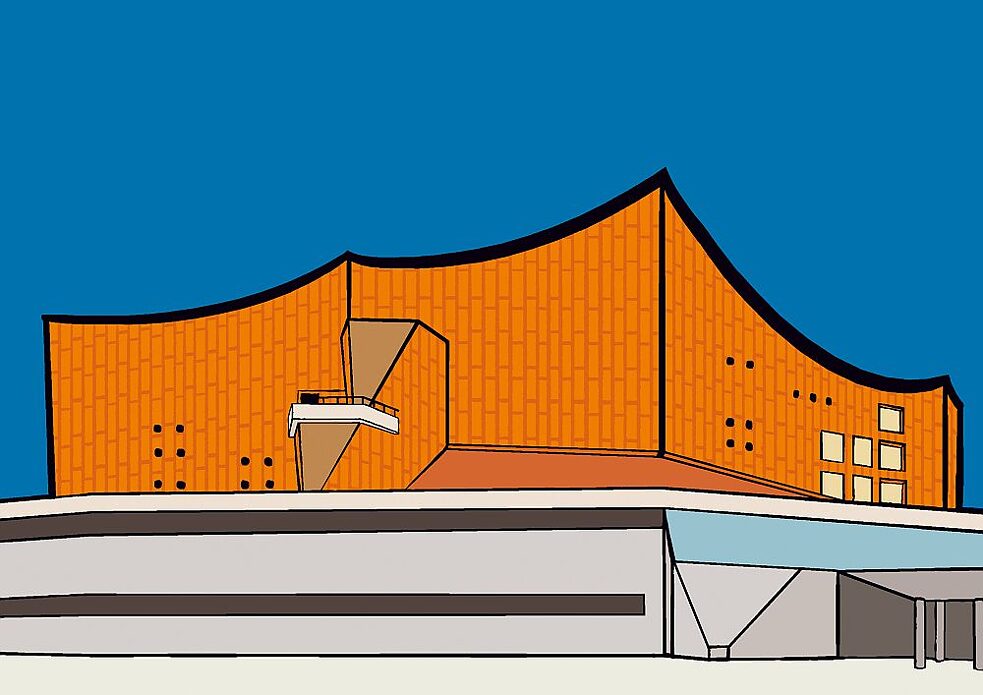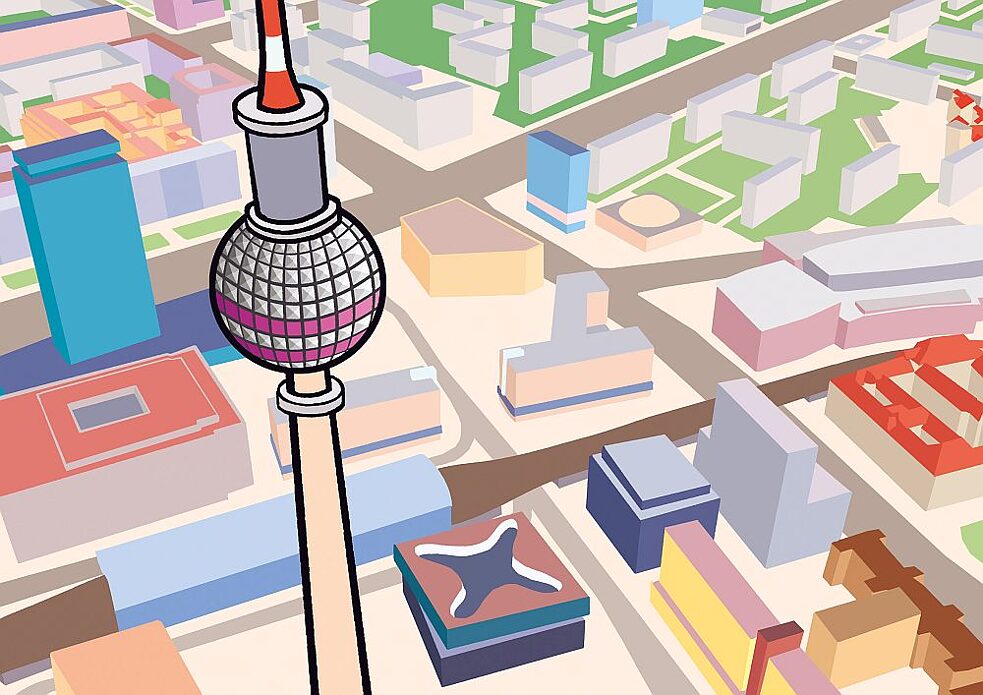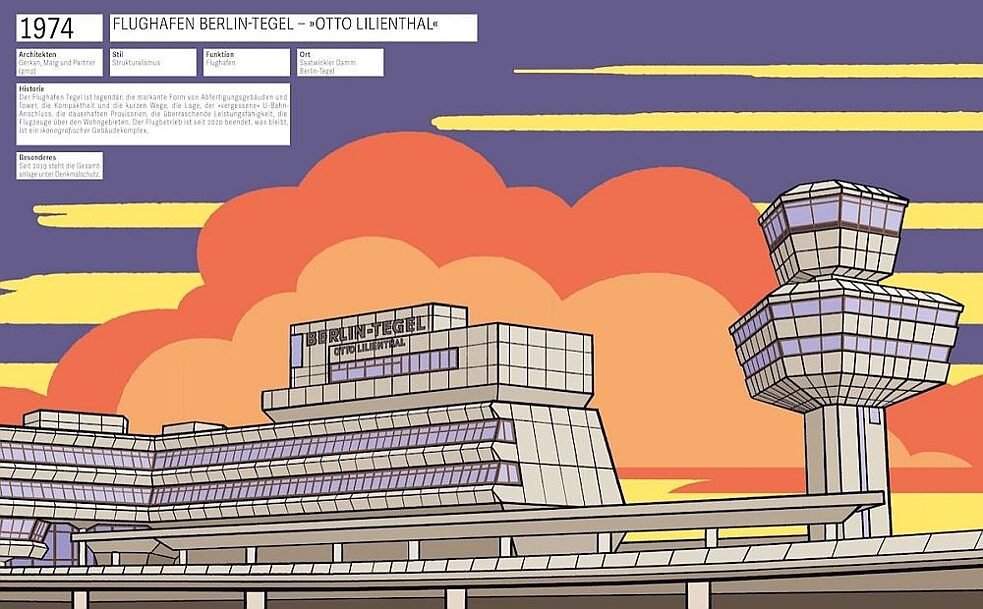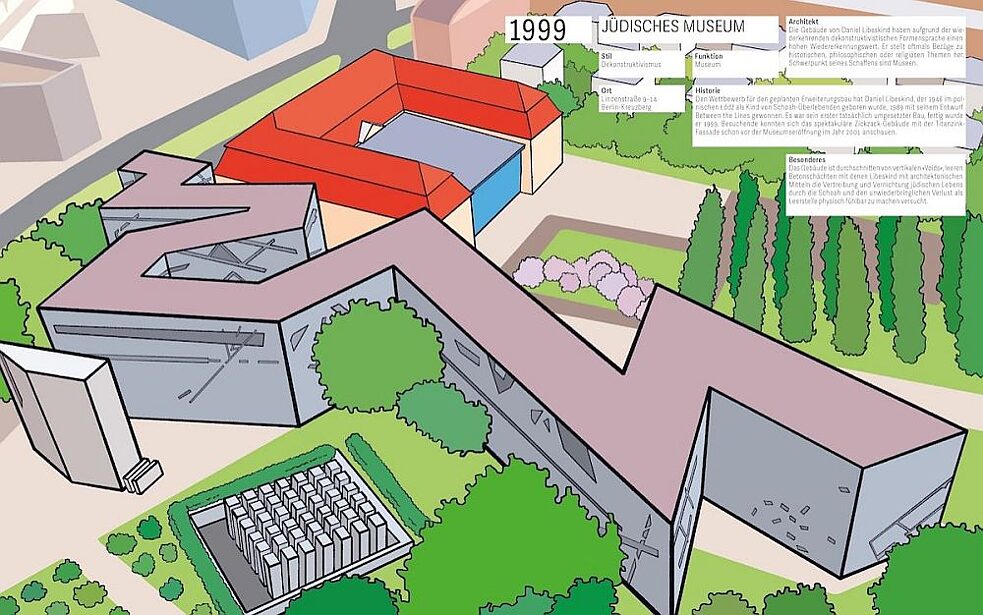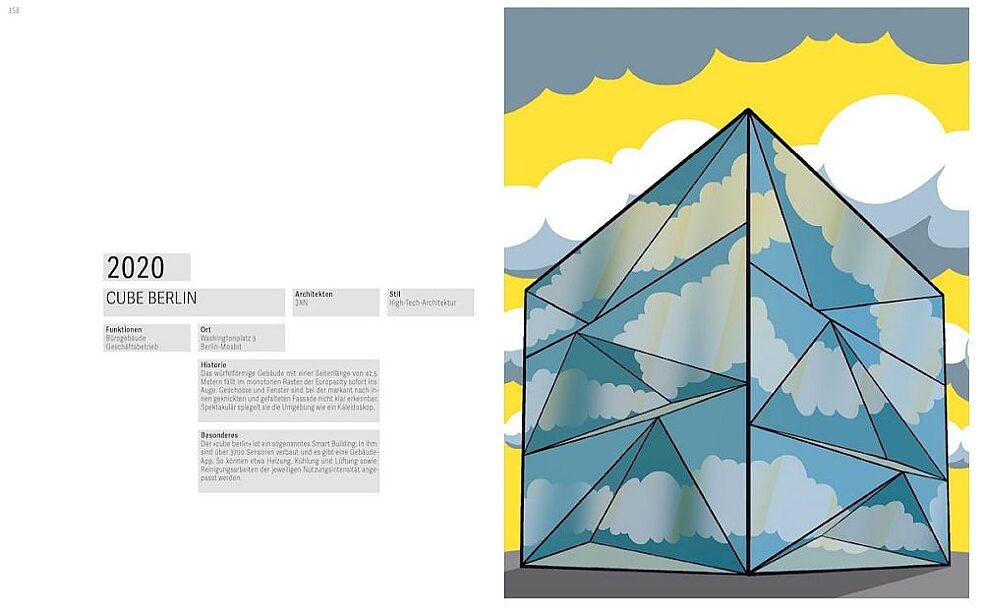The young graphic designer Leander Zerwer has created a somewhat different Berlin architectural guide for the years between 1946 and 2022.
Born in 2002, Leander Zerwer grew up in Berlin's Prenzlauer Berg district and studied graphic design at the Lette Verein. His final project has now been published in a book under the title Berlin baut (Berlin builds). Starting with 1946, which is illustrated with a view of Berlin lying in ruins, Zerwer has chosen one building for each year and portrayed it visually in a highly simplified but very appealing way on one or two pages in comic style. The illustrations are accompanied by small info boxes that provide brief information about the architects, style, functions, location, history and special features.1947 begins with the Berlin-Britz transmitter mast, which grew higher and higher over the years and was also technically upgraded so that Sender Freies Berlin could broadcast its radio programmes as well as those of RIAS (Radio in the American Sector) despite the GDR's jamming transmitters.
Architecture as a system issue
The construction of the Berlin Wall in 1961 cemented the division of the city. For Zerwer, the period after that shows architectural differences, but also parallels. One fundamental commonality was that both parts of the city became architectural "showcases of their state and the respective system". In the East, "workers' palaces" were built – e.g. the WBS 70 high-rise residential buildings from 1975 – and buildings in the style of socialist modernism – e.g. the Palace of Tears in 1962, the TV Tower at Alexanderplatz in 1969 and the Palace of the Republic in 1976 – or socialist postmodernism such as the Friedrichstadt-Palast built in 1984. In the West, the period between 1961 and 1989 saw representative and legendary buildings such as the Philharmonie (1963), the main building of the Technical University of Berlin (1965), the Neue Nationalgalerie (1968) and Berlin-Tegel Airport (1974).For the year of the fall of the Wall, Zerwer chose a marginal building, the Hönow underground station, which at the time was the terminus of the U5 line and was located behind the Berlin city limits. What the East German urban planners could not have foreseen at the time: Today, the ZR1 feeder cycle path to the R1 European Cycle Route begins there, leading from London via the Benelux countries, Germany, Poland, the Baltic States and Russia to Helsinki.
Colourful profile
In the years since the fall of the Wall, Zerwer has picked out some very famous examples, such as the Jewish Museum designed by Daniel Liebeskind (1999), Berlin Central Station (2006) or the Humboldt Forum in Berlin Palace (2021). But there are also lesser-known buildings, such as the electron storage ring BESSY II (1998) or the Alfred-Lion-Steg (2011).Zerwer's book is an extremely colourful profile of the German capital's building history since the end of the Second World War, which you can take with you on your next visit to Berlin to explore the city.
Leander Zerwer: Berlin baut. 1946 bis heute
Berlin: Hatje Cantz, 2022. 164 p.
ISBN: 978-3-7757-5335-7
Berlin: Hatje Cantz, 2022. 164 p.
ISBN: 978-3-7757-5335-7
March 2023
